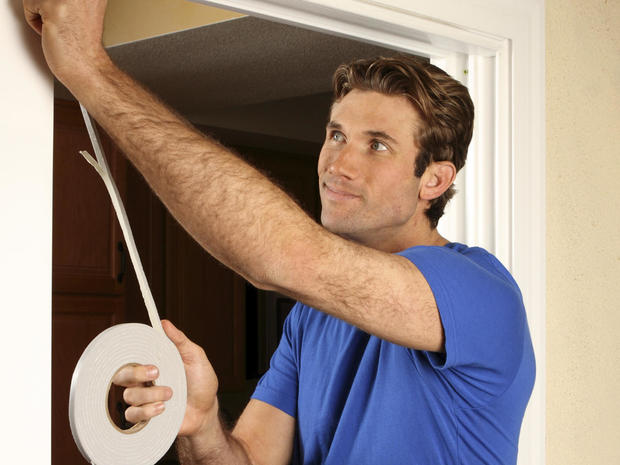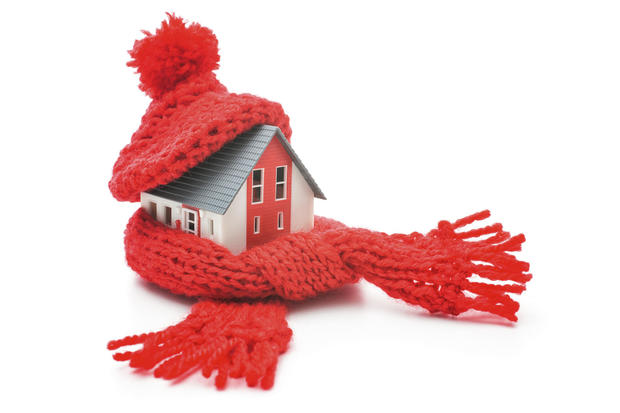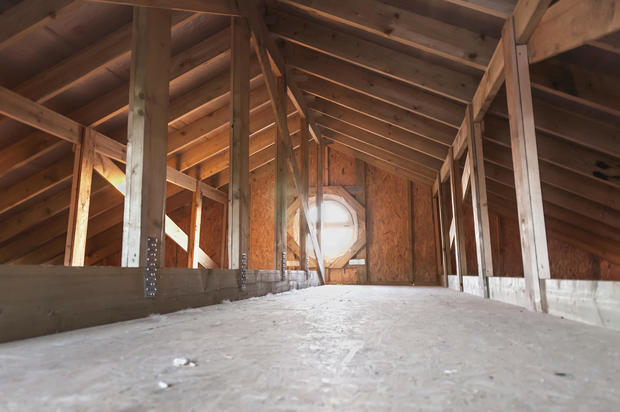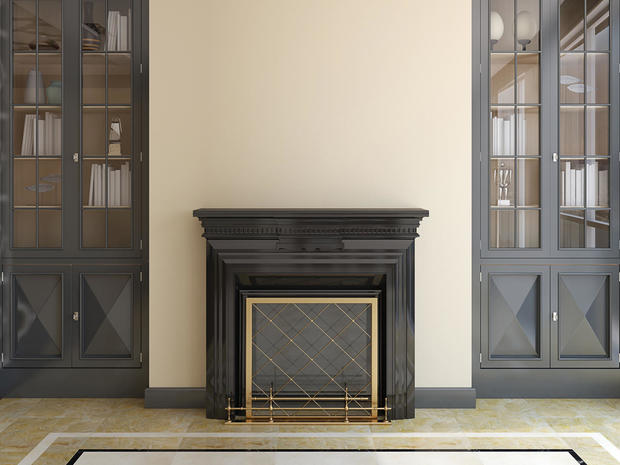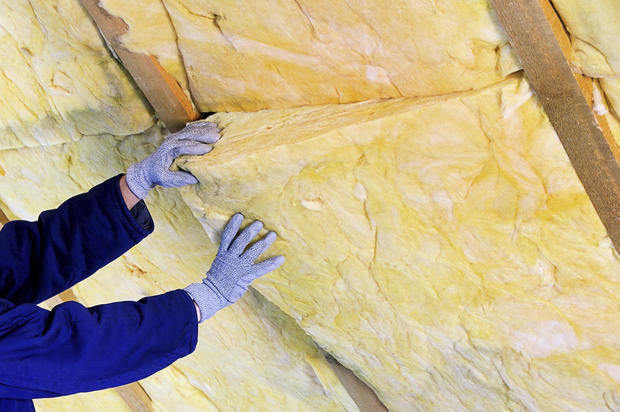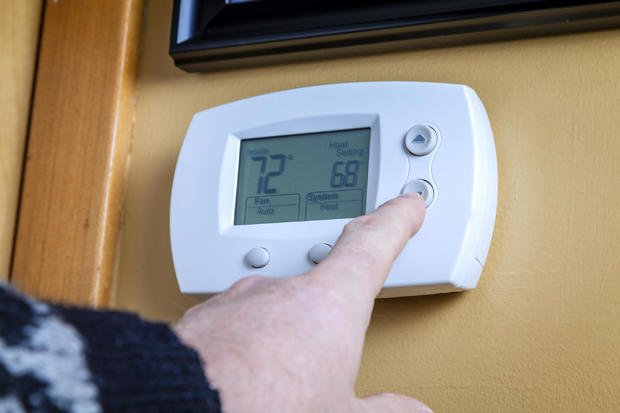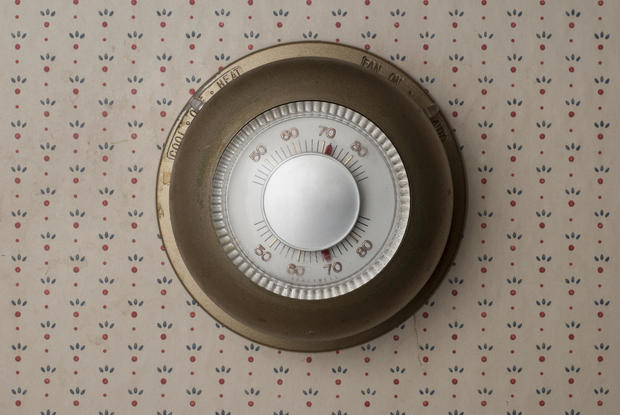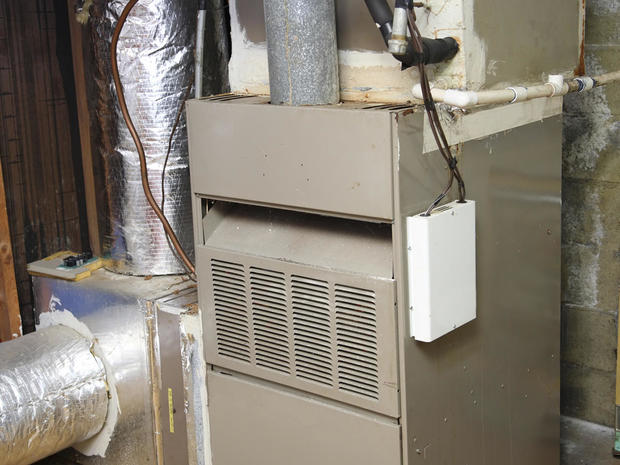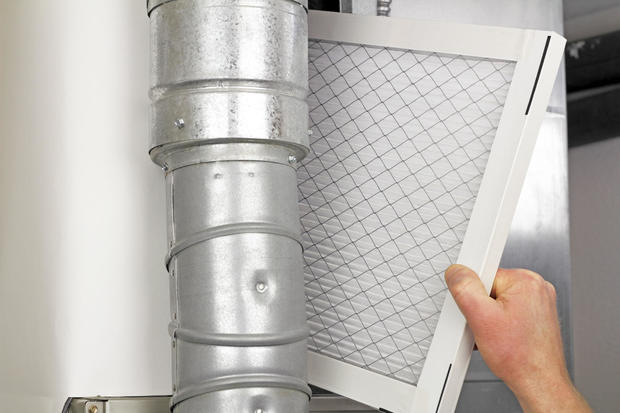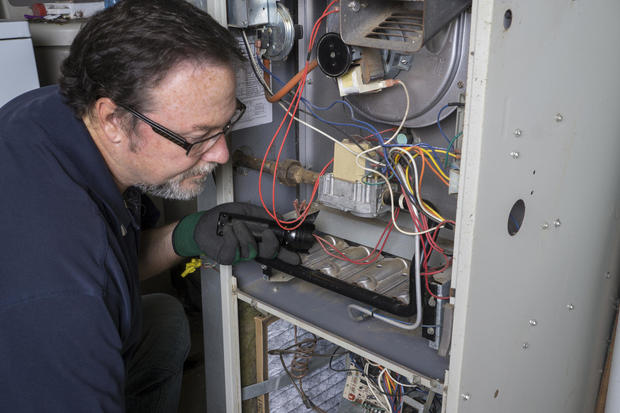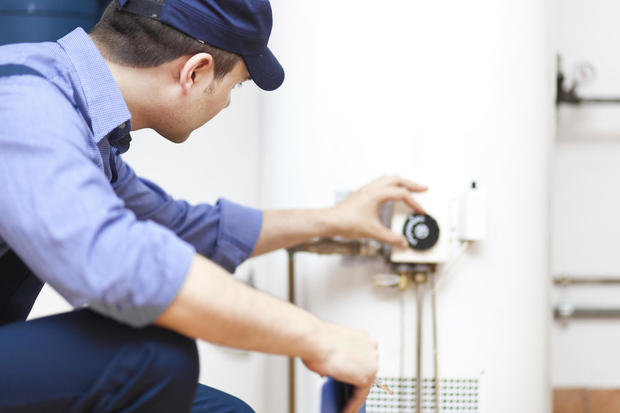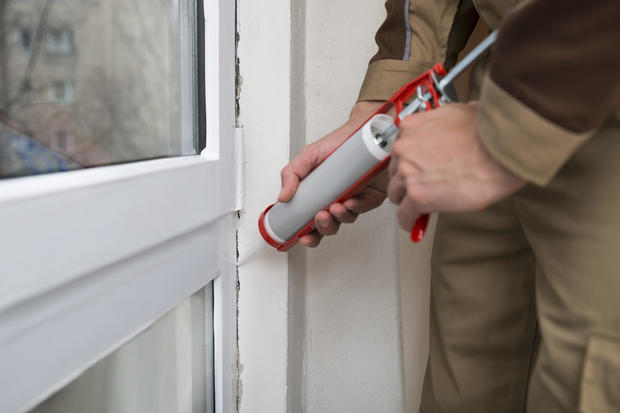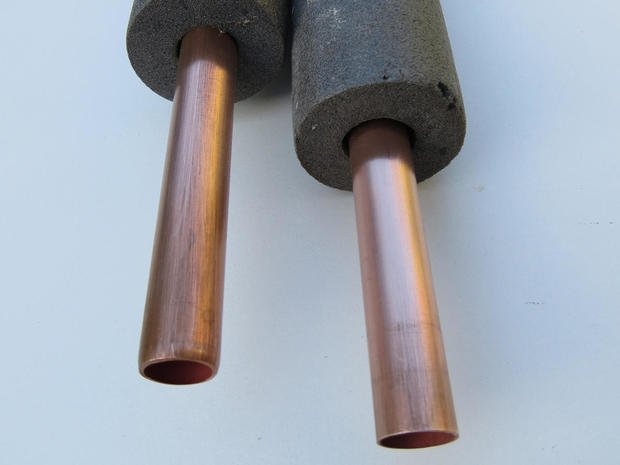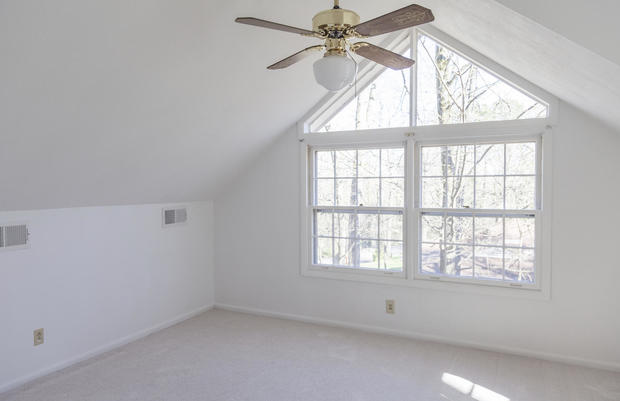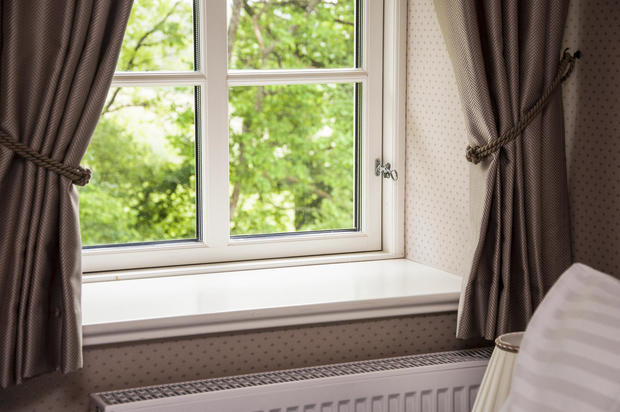16 low-cost ways to prep your home for winter now
By Marilyn Lewis/MoneyTalksNews
Heating costs can throw a wrench into your winter budget. But you can limit the losses by addressing the gaps, cracks and waste that drive up fuel costs. Such fixes are available at a lower price than you might imagine.
Run through this checklist of fixes to make your house cozier and your heating more affordable this year.
1. Install weatherstripping
Check your home's exterior doors for cold air leaks. Do this from inside the house. The high-tech approach is to use a laser infrared thermal gun to detect cold drafts. The low-tech way is to move a lit candle around the door frame; the flame will blow toward you in a draft.
Seal a drafty door by installing foam or felt weatherstripping inside the door frame. Ask at your hardware store for the correct products and installation instructions.
Cost: $10 to $20 per package for most standard products.
2. Install a door sweep
Use a door sweep to stop drafts from entering your home under an exterior door. A sweep is a flexible piece of rubber or plastic that's held to the door's lower edge by a strip of aluminum.
Cost: $5 to $35.
3. Seal attic air leaks
Find and seal gaps that could be allowing as much as 30 percent of your heated or cooled air to leak outdoors. These leaks add up to $300 a year to heating and cooling costs, HouseLogic says.
Pull back attic insulation to find and seal cutouts in drywall for electrical fixtures, pipes, fans and outlets. Also check wiring, chimneys, flues, vent stacks and ducts, and seal them on the inside. Use caulk to fill smaller gaps and pressurized expanding foam for bigger openings.
Cost: Caulk costs about $2 to $3 per tube. Expanding polyurethane foam runs less than $5 for a 12-ounce can.
4. Close the damper
Heated or cooled air flies up the chimney when you leave the fireplace damper open. Make it a habit to shut the flue after the fireplace has cooled.
Cost: $0
5. Add attic insulation
Insulation keeps you home cozy and keeps expensively cooled and warmed air indoors where it belongs.
"Typically, houses in warm-weather states should have an R-38 insulation in the attic, whereas houses in cold climates should have R-49," says This Old House, explaining how to install batting-type insulation.
Insulating an attic, basement or crawl space is moderately difficult, and beginners should use a professional. If you do, ask if you can perform parts of the job to reduce the cost.
Admittedly, insulating is not a cheap job. But the payback can be huge, and you may find rebates and financial incentives. See Energy.gov's guide to sources and to a calculator to estimate the return on an insulation investment.
Cost: Prices vary, depending on factors such as insulation type, local labor costs and size of the attic.
6. Install a programmable thermostat
A programmable thermostat can save up to $180 a year on fuel costs, according to EnergyStar. The thermostat can save fuel by automatically lowering (or raising) your home's temperature while you're away. It also keeps temperatures consistent, saving fuel.
Do not use a programmable thermostat with a heat pump unless the thermostat is meant for use with heat pumps.
Cost:
- Wi-Fi-enabled "learning" thermostats are expensive -- $250 and up.
- Simpler programmable thermostats, like this $60 Honeywell, for example, are a great deal: They offer separate programs for weekdays and weekends and let you program up to four different periods in a day.
7. Set the temperature manually — and leave it
You can enjoy fuel savings for free simply by setting your thermostat to one temperature in the morning, another at night and otherwise leaving the thermostat alone. If you're chilly, put on a sweater and warm socks instead of raising the heat.
EnergyStar.gov offers more tips to save using a manual thermostat.
Cost: $0.
8. Seal furnace ducts
Heating ducts typically waste 20 to 30 percent of the heated air they carry to leaks and poor conduction, says EnergyStar. Leaky heat ducts mean higher utility bills and a house that's harder to keep warm.
Appliances like water heaters and furnaces can cause the buildup of dangerous gases like carbon monoxide through a process called backdrafting, according to EnergyStar. Sealing leaks can reduce this risk, but before you start the job ask a heating contractor if you need to have a combustion safety test done first.
You won't be able to reach all of the ducts -- some are hidden in walls, ceilings and floors. But you can improve performance by sealing exposed ducts in the attic, crawl space, unfinished basement and garage.
Focus on the places where ducts, vents and registers meet floors, walls and ceilings. Use mastic sealant or metal tape, which are more durable than duct tape, to seal the seams and connections.
Cost: Cheap. A 10-foot roll of 3M rubber mastic tape costs $12 or less.
9. Replace furnace filters monthly
Dirty furnace filters reduce furnace efficiency and push up heating bills. They also shorten the life of a furnace.
Check and replace the furnace filter monthly in winter or every three months while the system is in operation. Your owner's manual will tell you where it's located. Hold the filter up to the light: If you can't see light through it, you need a new one.
Pleated filters work best because they trap more dirt particles.
Cost: Prices vary. Angie's List says filters cost:
- $1 each for flat fiberglass
- $10 each for pleated and polyester
- $25 each for high-efficiency varieties
10. Keep your furnace running smoothly
Servicing your furnace regularly helps you catch problems before expensive breakdowns, prolongs the furnace's life and keeps it running more efficiently.
Newer furnaces need professional servicing every two years. Older units require annual servicing.
Check your furnace's manual to see which specific steps are recommended. Ask friends and colleagues for names of good technicians. Find one or two you trust and stick with them.
Cost: This is not a DIY job. You'll pay $80 to $150, says home inspector and Zillow blogger Reuben Saltzman.
11. Insulate the hot water heater
Save on fuel by wrapping older water heaters in a blanket of insulation, an easy DIY project that even a beginner can do. Your utility company has instructions. When insulating a gas or propane water heater, do not cover the burner access.
Do not insulate:
- Pre-insulated water heaters. These are newer units with factory installed insulation of R-16 or better (check the manufacturer's label) under the metal shell.
- Water heaters located where the added heat is welcome.
- Water heaters whose manual or paperwork warns against insulating.
- Tankless (on-demand) water heaters.
Cost: $20 to $30. Or possibly free: Ask your utility company for any rebates, discounts or freebies. Some utilities offer free insulation and may even install it.
12. Lower the hot water temperature
Hot water heaters typically are set at 140 degrees. Lower the temperature on yours to 120 for fuel savings. You'll reduce the chance of accidental burns, and the water still will be plenty hot for bathing, washing clothes and doing dishes.
Cost: $0.
13. Plug household leaks
Grab a tube of caulk, a can of spray foam gap-sealer, a pencil and notepad. Tour your home, inside and out, including the basement, to find and fill cracks and gaps in siding, windows and foundation. Note locations of problems you can't fix right away.
Use caulk for small cracks and the foam sealer for bigger gaps. Inside the home use a candle flame or digital thermometer to find where cold air is entering. Pay attention to door frames, windows, skylights, chimneys and vents. Also check openings around appliance vents, electrical and plumbing fixtures and furnace ducts and check the top of basement walls where the foundation meets wood.
Cost: Caulk costs $2 to $3 per tube or less. Expanding polyurethane foam costs under $5 for a 12-ounce can. Dummies.com tells which product to use where.
14. Insulate hot-water pipes
Insulate the hot-water pipes in your basement or crawl space by snapping foam sleeves on them. You'll find pre-slit, hollow-core, flexible foam pipe insulation at hardware stores. Make a note of your pipes' diameters and lengths and bring the measurements when you shop.
Exposed pipes waste heat by cooling the water as it runs through them. Be sure to include pipes between the hot-water tank and wall. Also insulate cold-water pipes for the first 3 feet after they enter the house.
Cost: Prices and products vary, but a 6-foot piece of half-inch foam insulation can be found for $2 to $3.
15. Set ceiling fan blades for winter
Set fan blades to move clockwise in winter and run fans slowly. The idea is to lift cool air to the ceiling and push heated air down where you can enjoy it. Some fans have a remote control or remote switch. Otherwise, use a ladder and manually adjust the small toggle switch on the fan body. Now set the thermostat a notch lower and enjoy the warmth.
Cost: $0.
16. Use your window coverings
It's surprising how much insulation curtains, drapes, shades and even mini blinds provide.
Draw window coverings at night and when you're away to conserve heat in the home. In hot weather, draw window coverings in the morning to keep the house cool, saving money on air conditioning.
Cost: $0.
